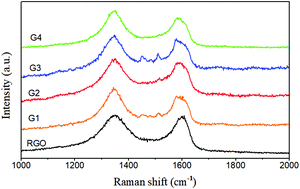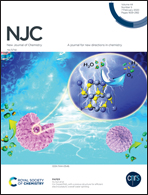Designing multifunctional gels with electrical conductivity, mechanical toughness and self-oscillating performance
Abstract
Self-oscillating polymer gels driven by the Belousov–Zhabotinsky (BZ) chemical reaction are a new class of functional gels that have a wide range of potential applications (e.g., in autonomously functioning membranes and as artificial muscle actuators). However, their use in areas such as robotics and soft wearable electrical devices is currently limited because of their poor mechanical strength and electrical conductivity. In general, double network (DN) hydrogels that feature electrically conductive nanoparticles have been investigated with the aim of improving the toughness of gel materials. Herein, we have developed a novel “self-oscillating” gel with electrical conductivity and mechanical toughness using reduced graphene oxide (RGO). To prepare the gels, 5-acrylamido-1,10-phenanthroline bis(1,10-phenanthroline)iron(II) (Fe(phen)3) was used as a catalyst in the BZ reaction to induce self-oscillating behavior, whereas RGO was used to improve the toughness and electrical conductivity via physical cross-linking. The electrical conductivity of a gel with 0.35 wt% RGO content was found to be up to 15.58 S m−1, with a tensile strength of 80 kPa, 870% tensile strain and a toughness of 0.99 MJ m−3. The prepared gels exhibit autonomous mechanical oscillation without the need for any external stimuli and their oscillating amplitude was increased upon adding RGO. These characteristics of the prepared gels make them suitable for use in further applications in wearable flexible electronic devices and biomimetic materials.



 Please wait while we load your content...
Please wait while we load your content...